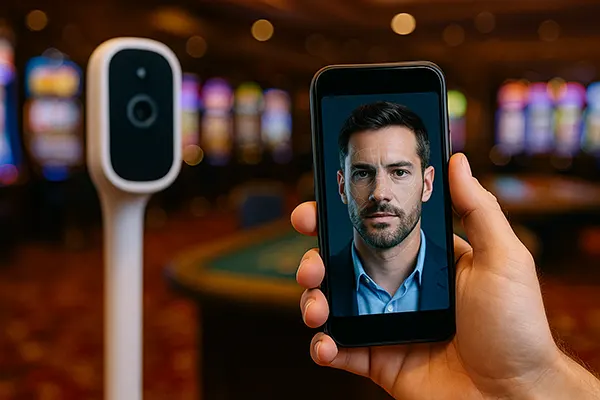
Biometrics in Casinos: Are Players Ready for Face Scanning?
Facial recognition technology is rapidly being introduced across various industries, including retail, banking, and entertainment. One of the sectors that has shown growing interest in biometrics is the gambling industry. In recent years, online and land-based casinos have been testing biometric authentication as a method to simplify verification, improve security, and reduce fraud. But are players ready for their faces to become the new key to their accounts and payouts?
Adoption of Biometric Technologies in Gambling
Biometric systems such as facial recognition, fingerprint scanning, and iris detection are being gradually implemented by casino operators, especially in countries with advanced regulatory frameworks. For example, the United Kingdom Gambling Commission has acknowledged the potential of biometrics to enhance Know Your Customer (KYC) compliance. Australian land-based casinos have already integrated facial recognition to identify excluded or self-excluded players in real time, helping enforce responsible gambling measures.
Online gambling platforms are also integrating biometric login options on mobile devices. Apple’s Face ID and Android’s facial unlock mechanisms are being increasingly used by players to access their accounts. In jurisdictions like Sweden and Finland, biometric verification is often connected to national ID systems, which enhances both legal compliance and user convenience.
However, despite technological advances, adoption remains limited to pilot programs and specific regions. Large-scale implementation faces hurdles such as cost, legal implications, and ethical debates around privacy and data ownership.
Security, Fraud Prevention and Compliance
One of the strongest arguments in favour of biometric implementation is improved security. Traditional login credentials and even two-factor authentication can be bypassed or stolen. Biometric data is much harder to replicate, significantly reducing the risk of account breaches and unauthorised withdrawals.
In terms of anti-money laundering (AML) compliance and age verification, biometrics can automate checks with higher accuracy than manual processes. This contributes to stronger user identification, limiting the use of stolen identities or fraudulent payment details in gambling environments.
However, security is a double-edged sword. While biometric data strengthens user authentication, a breach of biometric databases poses irreversible risks. Unlike passwords, biometrics cannot be changed, and if leaked, the damage to players’ privacy can be permanent.
Player Sentiment and Public Acceptance
Player perception is a key factor in the success of biometric systems. Recent surveys conducted in the EU and North America show that approximately 60% of players are open to facial recognition for login and identity checks, provided their data is encrypted and not shared with third parties. Acceptance tends to be higher among younger demographics, particularly those already familiar with smartphone biometrics.
However, many players remain sceptical. Concerns over surveillance, misuse of data, and the fear of being constantly watched are prevalent, especially in countries where digital privacy laws are weak or poorly enforced. Trust in the gambling operator plays a major role in whether players accept biometric verification or abandon the platform altogether.
Transparency in data collection, processing, and storage is critical. Operators who are open about their data policies and offer clear opt-in options tend to receive more positive feedback from users. Offering alternative authentication methods also helps retain users who are uncomfortable with facial scans.
Legal Landscape and Regulation in 2025
As of June 2025, biometric data is classified as sensitive personal data under the EU’s General Data Protection Regulation (GDPR). Operators must obtain explicit consent, explain usage purposes, and ensure secure storage. The UK’s Data Protection and Digital Information Bill also imposes strict requirements on the use of biometrics for commercial purposes, including online casinos.
In the US, biometric legislation remains fragmented. While Illinois enforces the Biometric Information Privacy Act (BIPA), other states offer no clear guidelines. This legal inconsistency affects operator strategies, especially for international companies that serve users across multiple jurisdictions.
Operators looking to implement biometric authentication must now balance innovation with strict legal compliance, user transparency, and international variations in law. In markets with clear guidelines, implementation is accelerating; in others, it remains limited due to uncertainty and risk.

The Future of Biometrics in Gambling
The direction of biometrics in the gambling industry depends largely on technological reliability, public trust, and regulatory evolution. With improvements in facial recognition accuracy and the use of liveness detection to prevent spoofing, technical barriers are diminishing. High-performance, low-latency recognition systems are already being integrated into mobile gambling applications and physical casino floors.
From an operational perspective, biometrics may reduce the need for manual document verification, streamline registration, and speed up withdrawals. Automated identity confirmation also benefits VIP management and exclusion programmes by enabling real-time alerts and tailored user flows.
However, adoption must be gradual and cautious. The absence of international standards, growing scrutiny of AI-powered surveillance, and concerns over user data rights suggest that biometrics will not become the default option for every casino in the near term. Hybrid models that allow both biometric and traditional authentication are likely to dominate the next phase of implementation.
Balancing Innovation with Ethical Responsibility
Innovative technologies should never compromise individual rights. In the gambling sector, where trust and transparency are essential, ethical considerations must guide every stage of biometric implementation. This includes how user data is collected, who has access to it, and how long it is retained.
Operators must clearly communicate the purpose of biometric systems and offer users genuine alternatives. It is essential that facial recognition is introduced as an optional feature, not a mandatory requirement, to respect user autonomy and foster inclusivity.
Ultimately, the success of biometric authentication in casinos depends not only on security or convenience but on establishing a digital environment where players feel respected and protected. Only then will technology enhance, rather than alienate, the user experience.
